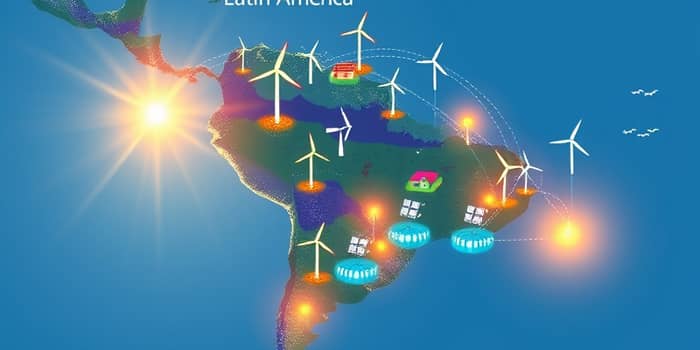
Latin America’s energy landscape is undergoing a profound transformation. What was once a region primarily associated with fossil fuel production is now rapidly asserting itself as a global focal point for renewable and clean energy investment. As governments, private investors, and communities unite around a shared vision of sustainability, the region is carving out a unique niche on the world stage.
With concrete policy reforms and substantial inflows of green financing, Latin America is forging a future that balances economic growth with environmental stewardship.
By harnessing abundant natural resources—from sun-drenched deserts to windswept plains and powerful rivers—the region is not only meeting domestic demand but positioning itself as a major exporter of clean energy solutions.
In just a decade, clean energy investment in Latin America surged nearly 25%, reaching USD 70 billion by 2025. This growth contrasts sharply with a 20% decline in fossil fuel investment over the same period, illustrating a clear pivot toward sustainable alternatives.
Today, Latin America and the Caribbean generate 65% of their electricity from clean sources—well above the global average of 41%. By 2025, that share is expected to exceed 75%, driven by hydropower, wind, and solar.
Key figures highlight this momentum:
As traditional coal dependency drops to just 5%, and natural gas share begins to decline, Latin America’s energy mix has never been more resilient and future-focused.
Several interlocking forces are propelling Latin America to the forefront of the energy transition:
While regional trends are strong, individual nations showcase unique strengths and specializations. The following table summarizes key developments:
Despite significant progress, Latin America faces several hurdles on its route to full decarbonization:
Addressing these constraints demands coordinated action from governments, investors, and communities to ensure resilient infrastructure and supportive regulatory frameworks.
Looking ahead, Latin America’s growth trajectory is poised to accelerate. Projections suggest an additional USD 55 billion in energy investment by 2035, with the lion’s share directed toward renewables.
To fully realize this potential, stakeholders can consider the following strategies:
By embracing these approaches, Latin America can not only meet its decarbonization goals but also serve as a replicable model for emerging markets worldwide. The region’s unique combination of natural assets, growing demand, and innovative policies positions it to lead the next wave of global energy investment.
Ultimately, Latin America’s rise as an energy investment hub is more than a financial story—it is a testament to the power of collaboration and vision. As the world seeks sustainable growth pathways, the region’s achievements offer both inspiration and practical lessons for policymakers, entrepreneurs, and communities everywhere.
References













